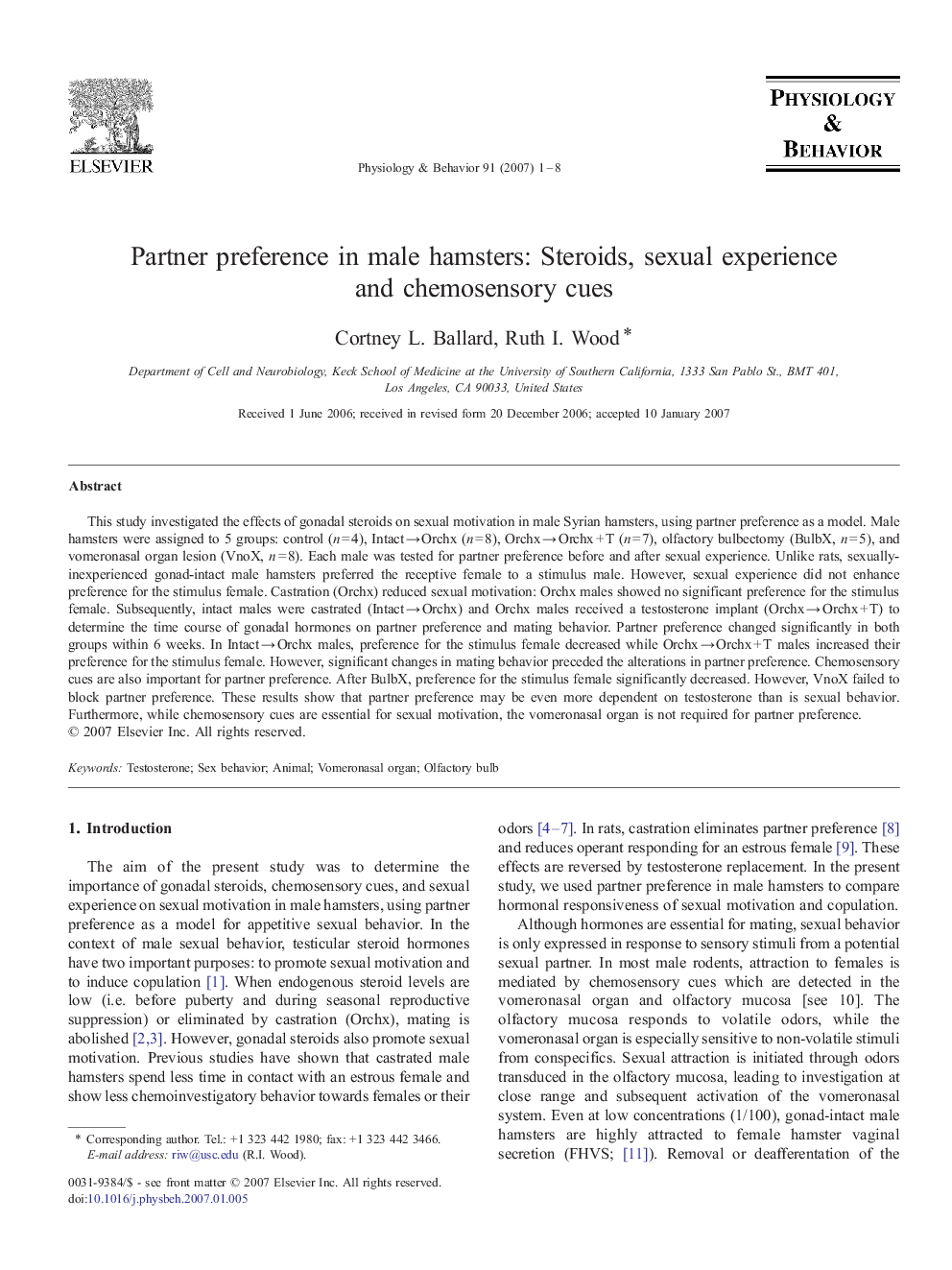| Article ID | Journal | Published Year | Pages | File Type |
|---|---|---|---|---|
| 2846094 | Physiology & Behavior | 2007 | 8 Pages |
This study investigated the effects of gonadal steroids on sexual motivation in male Syrian hamsters, using partner preference as a model. Male hamsters were assigned to 5 groups: control (n = 4), Intact → Orchx (n = 8), Orchx → Orchx + T (n = 7), olfactory bulbectomy (BulbX, n = 5), and vomeronasal organ lesion (VnoX, n = 8). Each male was tested for partner preference before and after sexual experience. Unlike rats, sexually-inexperienced gonad-intact male hamsters preferred the receptive female to a stimulus male. However, sexual experience did not enhance preference for the stimulus female. Castration (Orchx) reduced sexual motivation: Orchx males showed no significant preference for the stimulus female. Subsequently, intact males were castrated (Intact → Orchx) and Orchx males received a testosterone implant (Orchx → Orchx + T) to determine the time course of gonadal hormones on partner preference and mating behavior. Partner preference changed significantly in both groups within 6 weeks. In Intact → Orchx males, preference for the stimulus female decreased while Orchx → Orchx + T males increased their preference for the stimulus female. However, significant changes in mating behavior preceded the alterations in partner preference. Chemosensory cues are also important for partner preference. After BulbX, preference for the stimulus female significantly decreased. However, VnoX failed to block partner preference. These results show that partner preference may be even more dependent on testosterone than is sexual behavior. Furthermore, while chemosensory cues are essential for sexual motivation, the vomeronasal organ is not required for partner preference.
